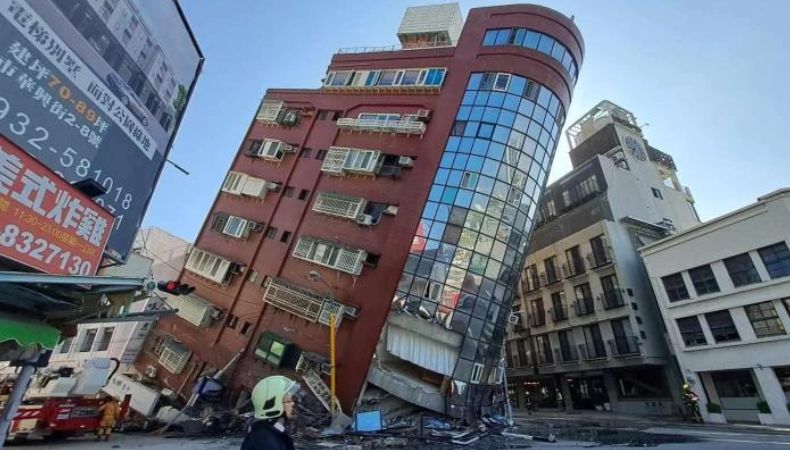Rescue Operations Underway in Taiwan to Locate Individuals Unreachable After Powerful Earthquake

Rescue teams in Taiwan are engaged in intensive search and rescue operations following a powerful earthquake that struck the country. The earthquake, the strongest in a quarter century, resulted in the loss of nine lives and caused widespread destruction, leaving hundreds of people either trapped or out of contact.
In the city of Hualien, located close to the earthquake’s epicenter, efforts are underway to stabilize damaged buildings and assess the extent of the devastation. The Uranus Building, one of the structures affected, is being reinforced with construction materials, while authorities collect samples and residents cautiously navigate the aftermath.
Mayor Hsu Chen-wei reported that 48 residential buildings were damaged, some of them perilously tilting with crushed ground floors. However, signs of normalcy are gradually returning to the region. Local rail services have partially resumed, and Taiwan Semiconductor Manufacturing Co., a vital industry player, has restarted most of its operations.
Residents, like Hendri Sutrisno, a professor at Hualien Dong Hwa University, have been forced to seek temporary shelter due to the fear of aftershocks. Many have chosen to stay in tents until the situation stabilizes, considering the damage to their apartments and concerns about structural integrity.
The earthquake inflicted injuries on nearly 1,070 people, with casualties reported in different locations. Taroko National Park, a popular tourist attraction known for its canyons and cliffs, saw four fatalities. The Uranus Building and the Ho Ren Quarry were also sites of tragic loss.
As rescue efforts continue, the focus remains on those still trapped or out of contact. Over 600 individuals, including guests and employees at Silks Place Taroko hotel, are awaiting rescue. However, authorities have reassured that they are safe and efforts to repair access roads are nearing completion. Other trapped individuals, including tourists and university students, have also been reported as safe.
While progress is being made, around 40 people, mostly hotel employees, remain unaccounted for in the national park. Rescue teams are actively working to establish contact and ensure their well-being.
The earthquake and subsequent aftershocks triggered landslides, damaged infrastructure, and disrupted transportation networks. The national legislature and sections of Taipei’s main airport sustained minor damages. Authorities recorded more than 300 aftershocks since the initial quake, further adding to the challenges faced by the affected regions.
Taiwan, a region accustomed to seismic activity, has implemented stringent construction standards to ensure buildings can withstand earthquakes. The full extent of the economic losses caused by the earthquake is yet to be determined. Taiwan’s prominence as a leading manufacturer of high-tech products, particularly sensitive to seismic events, raises concerns about potential disruptions to supply chains.
Hualien, which experienced a deadly quake in 2018, is no stranger to the destructive power of earthquakes. However, the resilience and preparedness of Taiwan’s population provide hope for recovery and reconstruction. As rescue operations continue, the nation will rally together to support those affected and rebuild stronger than before, drawing from past experiences and lessons learned.




